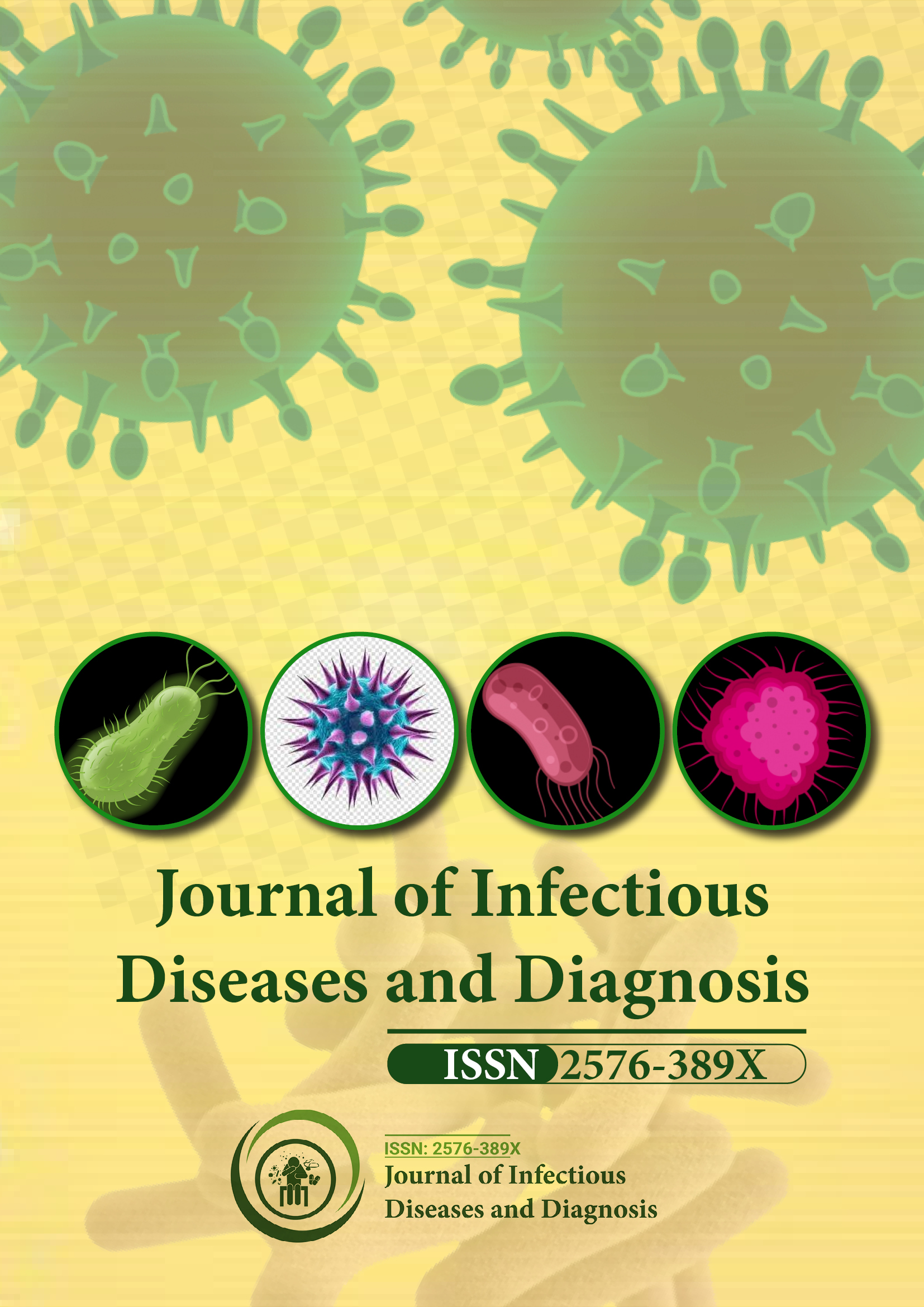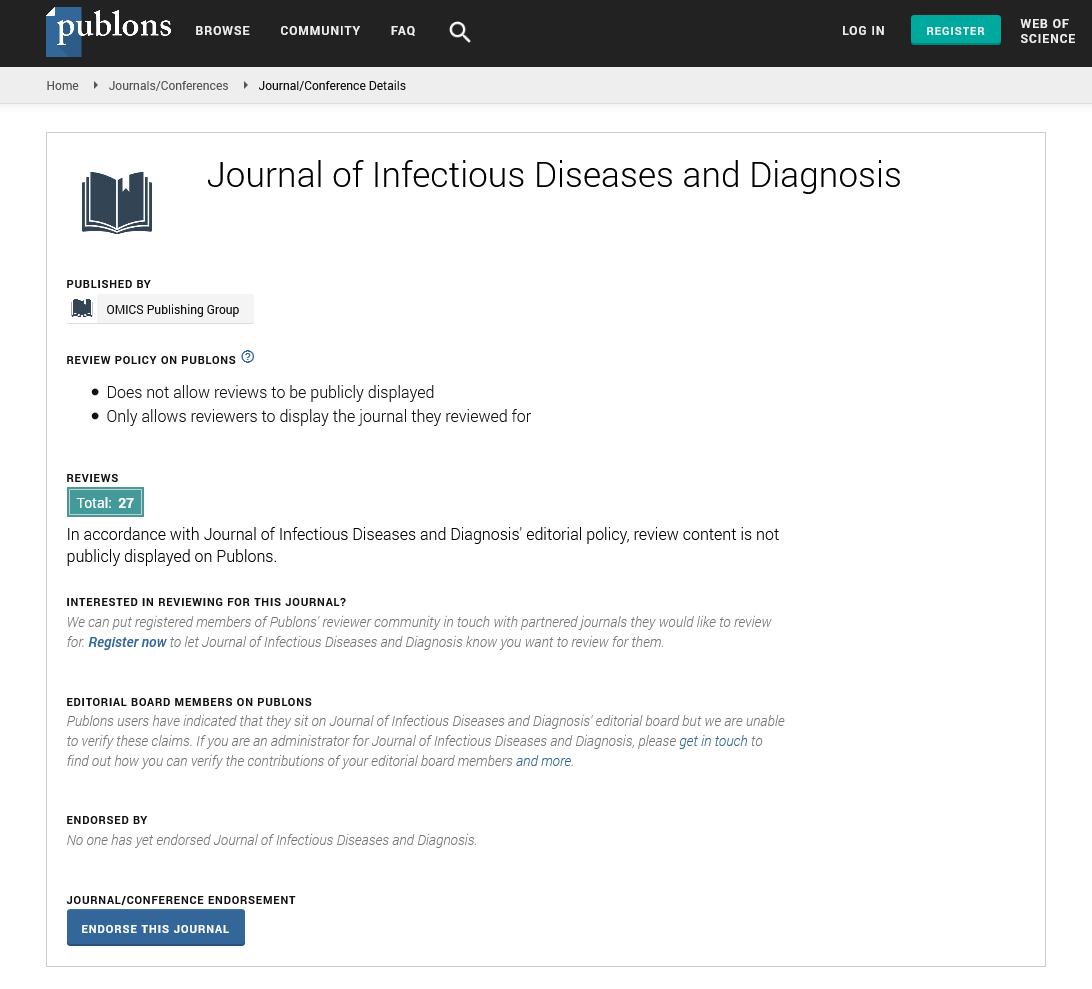Indexed In
- RefSeek
- Hamdard University
- EBSCO A-Z
- Publons
- Euro Pub
- Google Scholar
Useful Links
Share This Page
Journal Flyer

Open Access Journals
- Agri and Aquaculture
- Biochemistry
- Bioinformatics & Systems Biology
- Business & Management
- Chemistry
- Clinical Sciences
- Engineering
- Food & Nutrition
- General Science
- Genetics & Molecular Biology
- Immunology & Microbiology
- Medical Sciences
- Neuroscience & Psychology
- Nursing & Health Care
- Pharmaceutical Sciences
Editorial - (2021) Volume 6, Issue 2
Current Perspectives in Disease Diffusion
Sivaramakrishna Yadavalli*Received: 07-Jul-2021 Published: 28-Jul-2021, DOI: 10.37421/2576-389X.2021.6.e109
Description
Disease diffusion happens once a malady is transmitted to a brand new location. It implies that a malady spreads, or pours out, from a central supply. The thought of showing the unfold of malady employing a diffusion pattern is comparatively trendy, compared to earlier strategies of mapping malady, that are still used these days. According to Rytokonen, the goals of malady mapping is to explain the spatial variation in malady incidence to formulate associate degree etiological hypothesis, to spot areas of high risk so as to extend interference and to supply a map of malady risk for a locality for higher risk readiness.
Torsten Hagerstrand’s early work on “waves of innovation” is that the basis that a lot of medical cartographers and geographers use for mapping spatial diffusion (1968). The diffusion of malady may be represented in four patterns like growth diffusion, contagious diffusion, gradable diffusion and relocation diffusion. Cromley and McLafferty conjointly mention network diffusion and mixed diffusion. The diffusion of communicable disease tends to occur during a ‘wave’ fashion, spreading from a central supply. Pyle mentions barriers that create a resistance towards a wave of diffusion, that embrace however don't seem to be restricted to physiographic options i.e. mountains, water bodies, political boundaries, linguistic barriers, and with diseases, a barrier may be differing management programs. The diffusion of malady may be known as a traditional distribution over time associate degreed translated into a formed curve to point out the phases of malady diffusion. The phases are Infusion (25th percentile), Inflection (50th percentile), Saturation (75th percentile), and Waning to the higher limits.
Types of disease diffusion
• Expansion diffusion happens once the spreading development contains a supply and diffuses outward into new areas, associate degree example being a spreading inferno.
• Relocation diffusion happens once the spreading development migrates into new areas, leaving its origin or supply of the malady.
• Contagious diffusion is that the unfold of associate degree communicable disease through the direct contact of people with those infected.
• Hierarchal diffusion happens once a development spreads through associate degree ordered sequence of categories or places.
• Network diffusion happens once a malady spreads via transportation and social networks, "reflecting the geographical and social structuring of human interactions".
• Mixed diffusion may be a combination of contagious diffusion and gradable diffusion. AIDS may be an outstanding example in modern society of a mixed diffusion malady, usually spreading on the gradable, network, and contagious diffusion patterns.
The value of mapping and Geographic data Systems (GIS) is turning to be well known to public health professionals to assist link malady management to interference efforts, which may aid in developing higher immunization programs. GIS is a wonderful tool to establish spatial patterns and core areas of malady transmission. Malady maps will distinguish the low and high risk areas, furthermore as highlight “physical and or sociocultural” factors that contribute to the exploit of malady. A geographic data system may be a conceptualized framework that gives the power to capture and analyze spatial and geographic information. GIS applications or GIS apps are computer-based tools that enable the user to make interactive queries, store and edit spatial and non-spatial information, analyze spatial data output, and visually share the results of those operations by presenting them as maps. Geographic scientific discipline is that the scientific study of geographic ideas, applications, and system is normally initialized as GIS, as well. Geographic data systems are utilized in multiple technologies, processes, techniques and strategies. They’re hooked up to numerous operations and various applications that relate to engineering, planning, management, transport/logistics, insurance, telecommunications, and business. For this reason, GIS and site intelligence applications are at the muse of location-enabled services that have faith in geographic analysis and image.
Citation: Yadavalli S (2021) Current Perspectives in Disease Diffusion. J Infect Dis Diagn.6:e109.
Copyright: © 2021 Yadavalli S. This is an open-access article distributed under the terms of the Creative Commons Attribution License, which permits unrestricted use, distribution, and reproduction in any medium, provided the original author and source are credited.

